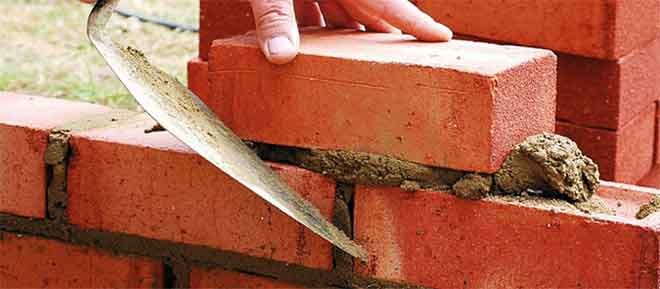It is important to know the perfect ratio of cement and sand mix otherwise you won’t be able to achieve the desired output. The most important part of the construction, brickwork is done with help of bricks and cement mortar. Depending on the requirement there are different ratios used for cement mortar for brickwork.
What is Brickwork and how is it classified?
Brickwork is done when walls are created by joining the brick with help of cement mortar. These bricks are defined as the basic building element in a room that transfers the load of the roof to the ground. There are various qualities and thickness available in bricks in the construction industry that are bonded together with vertical cross joints. Thereby, lots of cement consumption for brickwork is required.
Depending on the quality of bricks, the brickwork is classified into three categories.
- First Class Brickwork, it is perfect for load bearing walls as the minimum crushing strength of the bricks used is 105 Kg per sq The cement sand ratio for brick masonry is 1:3 to 1:6.
In first class brickwork, rich mortar and best quality bricks are used that are free from cracks and chips.

- Second Class Brickwork, it has the minimum crushing strength of 70 Kg per sq meter which is not suitable for a building more than two floors.
- Third Class Brickwork, it is used for constructing a temporary structure. Sometimes, experts use cement mortar, but with third class brickwork it is also acceptable to use mud mortar.
The Easy Brickwork Calculation Formula
While working with first class bricks, it should be noted that for the walls with the thickness of 9” the cement sand ratio for brick masonry should be 1:6 and when it comes to a wall of 4.5” thickness the ratio can be made 1:4.
Note: To get Cement and Sand Ratio for Wall Plastering for construction check here.
Here is a simple and effective brickwork calculation formula that will help you to understand how much bricks will be required for 1 cubic meter of brick masonry. We can divide the calculation into three parts to find out the amount of cement, sand, and bricks required.
Given that the thickness is 230 mm for 1 cum brickwork and the ratio for cement mortar for brickwork is 1:5. By putting these values in the formula we will be able to find out how to calculate cement consumption for brickwork and how to find out the number of bricks required along with the volume of sand.
- To calculate the number of Bricks
For instance, the brick size is 200mmx100mmx100mm
After converting into meters it will be 0.2mx.1mx.1m
Hence, the total volume of a brick is .2x.1x.1=0.002 cum
Therefore,
To calculate the numbers of bricks for 1cum
The formula is 1cum/0.002cum= 500 numbers of bricks
- To calculate the cement quantity
The ratio of cement mortar is 1:5
The sum is 1+5 =6
Thus, the total dry mortar required for 1 cum brick masonry is.30cum
So,
The required cement is (.30×1)/6= 0.05 cum
After converting into KG=.05×1440=72KG
When converted KG into the number of bags= 72/50=1.44bag.
- To calculate the sand quantity
Given that the sand cement ratio is 1:5
So, sand required is (.30×5)/6=.25cum
When converted into kg =.25×1440=360Kg.
If you are looking for construction cost calculator then have a look on it here.
With this simple formula, it is easy to estimate the amount of cement consumption required for brick masonry. Remember depending on the class of brickwork of sand cement ratio the total calculation can change. Additionally, a homogeneous mix of sand, cement, and water is the secret of the recipe for a stronger bond between bricks. Therefore, only required a quantity of water should be used, and the mix should be prepared with a mechanical mix to assure the strength of the brick masonry.



This was very useful…. It be would even more better if your website has its own mobile App.
At the end of calculating sand in kg you have to multiply with density of sand 1600 so we get 0.25*1600=400kg
I really like
When we do calculations for a flat which consists of 9 inch and 4.5 inch wall, do we have to do seperate for both and at last we have to add both , please clarify this doubt anyone
You have made these calculations so simple and straightforward. I always had trouble calculating the sand and brick ratio but using your method as a guide has helped me a lot. I am so grateful for your help. Sand and brick ratios can be tricky, but with your help and a little practice it’ll become second nature for me. Thanks again!
Everything is connected by the sediment, creating an artificial rock. The best qualities of concrete, like its resistance to heat expansion, compression strength, and tensile strength, are also improved by the sand. Therefore, it’s crucial to maintain a proper cement-to-sand ratio.